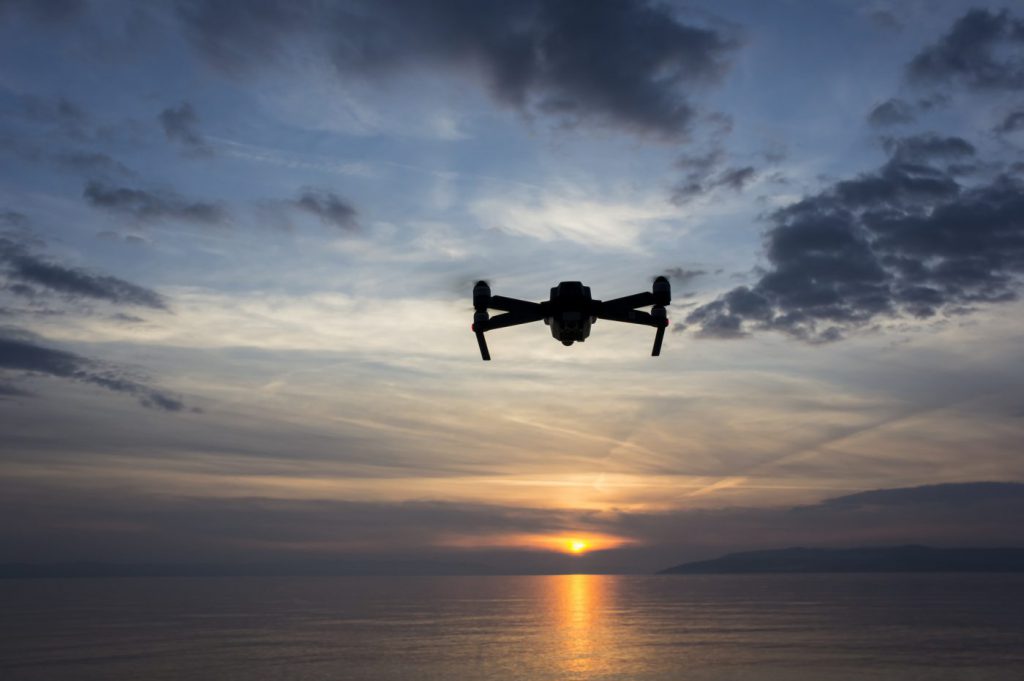Rock Surf & Deep
Fly Fishing With Drones
Throughout my angling career I have seen numerous new innovations, tactics and gadgets take the angling world by storm (pun intended).
Most anglers love these new developments and they embrace it in the hope that it will increase the chance of getting the catch of a lifetime. Who can forget how the “drop shot” took off or how the evolution of the lowly “coffee muel” into modern grinders, effectively turned competitive shore angling on its head. And so, the next new flavour has entered the angling arena, drone fishing. Although most new concepts are controversial, I don’t think I have ever seen more reaction and debate than with the arrival of the drone – especially in fishing circles on social media!
I am officially out of the closet – I own a drone and I love it! This doesn’t mean that I have lost the ability (or the will) to throw bait, but I now look at the possibility of targeting species I previously could not target from the shore. The drone also allows me to introduce new anglers to the sport, allowing them to get bitten by the fishing bug, and the opportunity to then help them to progress to throwing baits themselves – for me the most important plus is how it has improved the angling of some of our shore angling juniors, specifically in the South of KZN.
I hear a few skeptics chuckling but during the past few months we have watched these youngsters progress in the art of rigging a big bait and fighting and landing big fish – and this on days where seasoned anglers were “holding pole”.
Lessons learned
As with all new methods and gadgets there is a learning curve that normally ends up costing time, tackle, money and perseverance– many anglers have tried with el cheapo drones – only to have it end up in the ocean.
You will need a good quality drone capable of carrying your bait, sinker and line drag at least 300m out, with a remote-controlled release mechanism to drop the bait. You also need enough battery power and range for the drone to fly back to you – of course all these factors equate to price. I have a Couta copter, which is specifically built in South Africa for drone fishing; I also have experience of the DJI Phantom 4 and the DJI Mavic – I know these three models and have seen them work. My Couta copter has done more than 500 flights and is still going strong.
It is important to remember that with the drone you will need to get extra batteries as well as a smart charger; I would also suggest a carry case to protect the drone while travelling and to keep it out of the salt air while not in use.
The next and most important thing is learning to fly the drone. Make sure you are 100 per cent confident and proficient at flying and landing the drone before attempting a flight over the ocean – most insurance companies do not cover the drone in flight. Do a few mock drops at your local sports field or river, and of course, the more you practice the better you’ll get.
Tackling up
Depending on which species you are targeting and where you are fishing, for the most part your heavier shore angling equipment will suffice – what I have noticed, is that many up-country anglers are droning with “mickey mouse tackle” and this is one of the criticisms lodged against drone users. If you fish too light it is highly unlikely that you will not land the fish that has been hooked and that you will be leaving it trailing around with the line and hooks still intact (thus killing the fish), moreover when the tackle is too light, it also tires out the fish and this increases the chance that it will die when it is released.
Braid
This is one of the most important considerations when drone fishing – braid is the only way to go because it is thin and it allows you to fit more metres onto your reel – the diameter also has less drag in the water (this makes a big difference the further out you go); the most important plus for me is the lack of stretch – as this really does increase hook-up rates in the deep.
A good average is to go to no less than a 65-lb braid (personally I would choose 80lb or even 100 to 150lb). Therefore I can recommend j-braid and black velvet for big shark tackle.
Rod
Because there is no need to cast when using the drone, one can use a shorter rod, however some length is required to clear the rocks and keep the braid out of the breakers. I would say the best would be a 12.0 to 13.0 heavy rod with good quality guides that can handle braid and heavy leaders. I use a Saltist heavy 13″7 that I have shortened – the shortened rod has loads more pulling power, but the hi-modulus graphite is still sensitive. For those targeting edibles one can go slightly lighter.
Reel
As discussed, it’s important not to go under-gunned, you must bear in mind that your bait is going to be dropped from as far as 500m out and this makes line capacity of utmost importance. I would recommend that you look at loading your reel with at least an 80-lb braid and that the reel holds at least 700m (preferably more).
For the big shark’s one, you should use reels such as the Shimano Talica, Daiwa Saltiga ID-60, or my personal favourite, the new Dog Fight lever drag. Although some anglers are using grinders their line capacity is a drawback – it will also need to be a top-notch grinder, as the reel takes loads of pressure at a distance.
Terminal tackle
… and it is here where we keep on paying school fees.
Hooks
I am hooked on circles, especially for this method of fishing. When taking into account the distance from where you are standing to the bait, circle hooks certainly increase your hook-up rate and when it is rigged properly, one rarely misses a bite.
Good quality strong hooks are essential – my choice is the new Mustad tuna circle 8-12/0 and then for big baits the 12-14/0 Mustad Demon circle.
Sinkers
As a rule, the deeper you go, the worse the current gets and it is here where it is important to have a sinker that will hold your big bait, heavy trace and line drag in place. Remember that weight is also a consideration, especially with the drone, a long-boom sinker allows lighter weight. I use the tackle net extra-long boom drone sinker – the 9oz is perfect here.
Leaders
Bearing in mind that you don’t need to cast the leader through the eyes – you can go as heavy as you need to – you could use a1.4 to 2mm leader – the 2mm leader is bulletproof and allows you to land the fish quickly without the use of a gaff (thus increasing its chances of survival).
Traces
“Bigger, longer stronger” has become our motto for traces in drone fishing – for general shark fishing, use a 40 to 50cm piece of triple No. 8 stainless steel trace wire to a power swivel with at least two metre of 200lb AFW bleeding wire behind it.
Drone ethics and conservation
These are two of the most important issues that RSD revolves around: ethics and conservation. Drone anglers need to consider fellow shore anglers when dropping baits – there is no need for us to fish in the crowd if we are getting baits into unfished waters – fishing off to the side in a spot not always fished by other shore anglers who can’t get to the best waters, will often yield better results.
It is also important that we remember that we are fishing in waters not previously accessed by ski boaters and shore anglers. We are responsible in what we take for the pot (especially in marine protected areas like the pond land map where a lot of black musselcrackers and scotsman are being landed on the drone).
Edible and live bait traces vary according to species targeted and to highlight this, we will do an in-depth trace and bait presentation in the next RSD edition.






 Sign-up and receive the Business Media MAGS newsletter OR SA Mining newsletter straight to your inbox.
Sign-up and receive the Business Media MAGS newsletter OR SA Mining newsletter straight to your inbox.